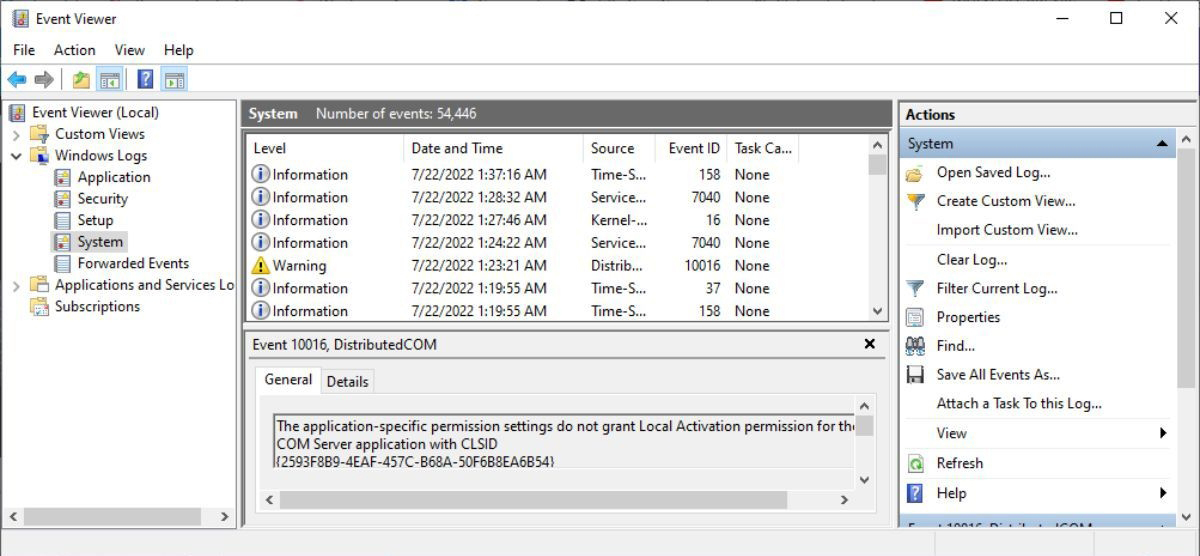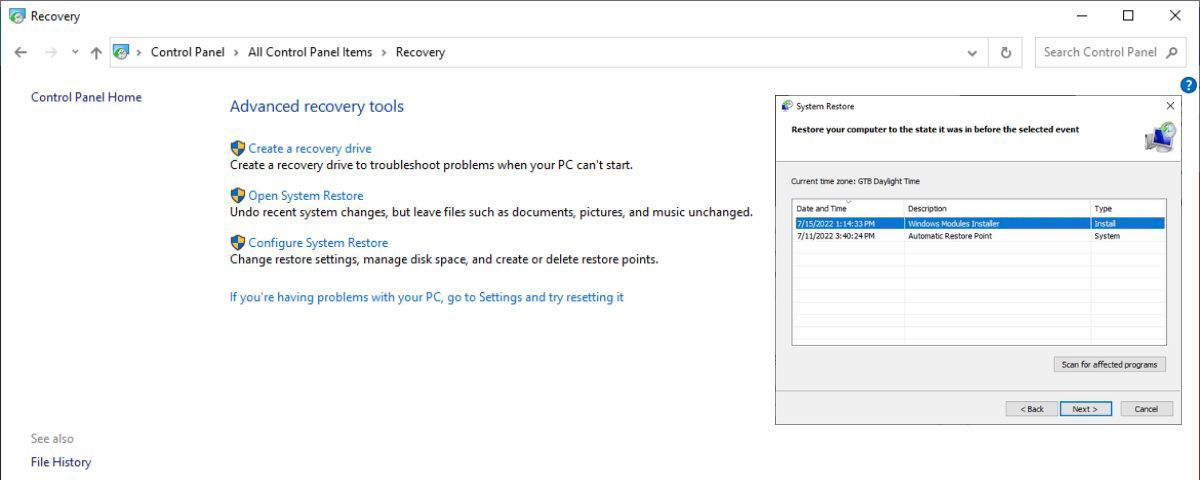What makes it harder to fix than other BSODs is that multiple drivers can cause this problem, and sometimes your computer can't detect all of them. This is why the first step users should take to deal with this error is to find the exact driver that is causing the problem.
Here's how you fix a system thread exception on Windows 10.
1. Boot Into Safe Mode
The first step druggies should take ahead trying to fix this problem is to bobble their computer into safe mode. Depending on your preferences and whether you're suitable to bobble your computer into the sign- in screen, there are several ways to go about itBoot Into Safe Mode via Settings
If you can go to the Settings app, do the following:
- Click the Start button, then select Settings.
- Go to Update and Security then click Recovery.
- Under Advanced Startup, click Restart now.
- The Choose an option From here go to Troubleshoot > Advanced Options > Startup Settings. Then click Restart.
- From here go to Troubleshoot > Advanced Options > Startup Settings. Then click Restart.
- When your PC reboots, press F5 to boot your computer into Safe Mode with Networking.
From the Sign-In Screen
If you can reach the sign-in screen:
- Just hold Shift and select the Power button followed by Restart.
- Follow steps 4, 5, and 6 from the portion above.
From a Blank Screen
If you are unable to reach the sign-in screen, follow these steps.
- To turn off your device's power button, press and hold it for 10 seconds.
- Press the power button again to boot it.
- As soon as your computer starts up, the manufacturer's logo appears, press the power button again for 10 seconds.
- Press the Power button to start your device.
- If done correctly, your computer will boot into the Windows Recovery Environment.
- Follow steps 4, 5 and 6 from the first section.
2. Finding Out Which Driver Is Accountable
Since the error is most likely caused by a bad driver, you can use the Windows log as a troubleshooting tool.To do this just follow these steps:
- Press Windows + R and type eventvwr in the Run dialog box.
- Go to the Windows Logs menu and expand it, then select System.
- Look for the log named system_thread_exception_not_handled and click on it to determine which driver is causing the problem.
If you get the SYSTEM_THREAD_EXCEPTION_NOT_HANDLED (nvlddmkm.sys) error, Windows 10 and 11 shows a blue screen due to an incompatible graphic card driver. Fortunately, there are several available fixes for this error.
If you get a SYSTEM_THREAD_EXCEPTION_NOT_HANDLED (wificlass.sys) error, the wireless driver file is causing the problem.
3. Rollback or Update the Drivers
Depending on which driver is responsible for the system thread exception that is not handled error, you may need to update or reinstall the relevant drivers.If the driver has not been updated in a long time, updating the driver will solve the problem. If the driver has been updated recently, it may be best to roll back the driver or reinstall the updates.
How to Update Drivers on Windows 10?
To update your drivers:
- Press Windows key + R and type devmgmt.msc to open Device Manager.
- Go to the respective device and expand the menu. For example, if the error was caused by the display driver, you need to increase the Display adapter option.
- Right-click the driver and click Update Driver.
- In the dialog box that opens, click Search automatically for updated driver software.
- Windows will also automatically search the web for the rearmost motorists and install them.
How to Rollback Drivers on Windows 10?
If you want to go back to your old drivers:
- Open Device Director and navigate to the motorist in question.
- Expand the menu and right-click on the driver.
- Click on Properties.
- Under the Drivers tab, click Rollback Driver.
- Windows will automatically roll back to the last available driver version.
4. Rename the Faulty File
When retrieving a file name associated with a system thread exception that is an unhandled error, users should rename the file. Doing so will cause Windows to make a new copy and reinstall it. The driver files are located at C:\Windows\System32\drivers.Follow these steps to rename the file:
- Open File Explorer and navigate to C:\Windows\System32\drivers.
- Find the affected driver.
- Click on it and press F2.
- Change the filename enlargement to .old.
- Press Enter and restart your computer.
5. Use SFC and DISM to Repair System Files
SFC and DISM are two powerful tools available at the disposal of every Windows user. In combination, they can detect and fix almost any system-related error. They are also quite easy to implement.Please make sure to create a system restore point as these commands replace system files.
How to Use DISM?
To run DISM:
- Run Command Prompt as administrator.
- In the console, type DISM /Online /Cleanup-Image /ScanHealth and press Enter.
- Wait for Windows to finish scanning. Then type DISM /Online /Cleanup-image /RestoreHealth.
- Windows will fix all problems that were found during the scan.
How to Use SFC?
To run an SFC scan:
- In the Start menu search bar, type cmd then right-click Command Prompt and run it as administrator.
- In the console, enter sfc /scannow
- Be patient as Windows will take time to scan and replace corrupt system files.
6. Use System Restore to Restore Your Computer
If you still get the "System Thread Exception Not Handled" error, you should use System Restore as a last resort. System Restore is a feature that restores Windows to an earlier state. These restore points are created periodically and when installing new software. Alternatively, you can add the Create System Restore Points option to the context menu for quick access.How to Use System Restore?
To perform a system restore:
- In the Start menu search bar, type Control Panel and click Open it.
- In the Control Panel search bar, type Recovery and open it from the results.
- Click on Open System Restore.
- Click Next and select a restore point from the list.
- Click on Finish.












No comments
Post a Comment